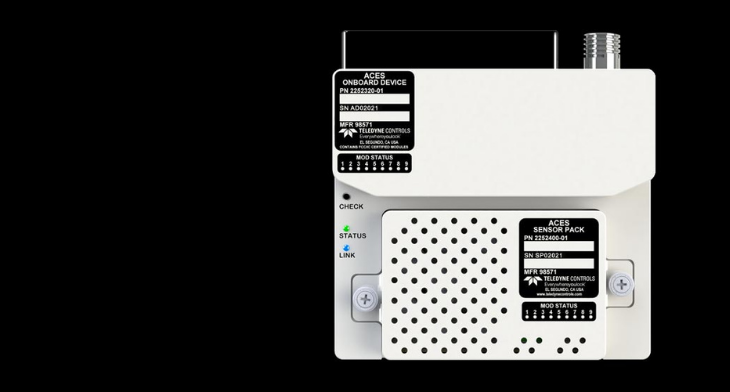
Teledyne Controls has obtained FAA Supplemental Type Certification (STC) approval for installation of its Aircraft Cabin Environment Sensor (ACES) on the Airbus A320 aircraft series.
Recently certified for the Boeing 737 aircraft and with certification for other aircraft types in progress, ACES is an autonomous solution that enables air transport operators to monitor, measure and analyse air quality in the cabin and flight deck to help them ensure a safe and positive flying experience for passengers and crew.
“Never before has monitoring air quality been more important. Unexpected smoke, odour or fume events can result in cancelled flights, expensive maintenance costs and potential health risks to passengers and crew. Although air quality monitoring solutions are available for homes, offices, and industrial areas, there is no automatic equipment installed on board most aircraft today,” explained George Bobb, Vice President of Teledyne Technologies and Segment President, Teledyne Aerospace and Defense Electronics. “Having ACES certified for both the Airbus A320 family and the Boeing 737 aircraft is a significant step forward. It gives airline executives, engineering, and maintenance teams the ability to monitor cabin air quality on a large portion of the world’s aircraft flying today with a solution ready to deploy.”
Teledyne ACES was specifically designed for the aviation industry. Wirelessly connected to a secure cloud service portal, Teledyne ACES laboratory-grade sensor technology continuously monitors and records the air quality in the cabin and flight deck for potentially harmful contaminants. The extensive air quality data collected during flight is available in real‑time on any mobile device through the ACES mobile app, and via secure web access to the ACES Cloud Service Portal, which provides configurable dashboards, custom alerts, and comprehensive reports that enable the operator to validate the air quality in the airplane, identify emerging issues and document maintenance efforts.





